Presented at an all-school assembly, October 11, 2011
by Richard Teller ’70, Archivist
(Note: Annually, and occasionally more often, Williston Northampton students hear a presentation about our shared history. Campus tradition has named this event “The Button Speech,” even though the subject matter rarely concerns Emily and Samuel Williston and the buttons. Here is the 2011 Button Speech, presented with the caveat that it was intended to be read aloud to a captive audience of teenagers at an early hour.)
(Another note, June 24, 2017: A while ago it became necessary to take this post down for some minor editing. This left the blog without a summary history of Northampton School for Girls. Thus, the text has now been restored to the blog with only minor changes from 2011.)
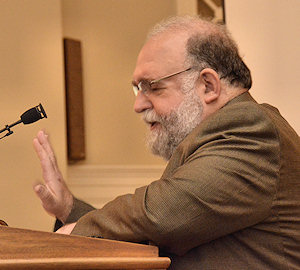
Good morning. We are at a milestone in school history this fall. The Williston Northampton School is 40 years old.
“Wait a minute,” you say. “This year I actually paid attention at Convocation, and Mr. Hill definitely said it was our 171st year. And what’s all that 1841 stuff about?” And you are absolutely right. Except that was a school with a different name: Williston Seminary. Although it’s the same school. Kind of.
Confused yet? This is why we have these little history talks. Contrary to rumor, they’re different every year! They started about 15 years ago after a student giving an admissions tour was overheard explaining, “It’s named for some guy named Williston. And it’s called Williston Northampton because if they called it the Williston Easthampton School, no one would come.” I am not making this up.
We are named for Northampton School for Girls, with whom Williston Academy merged in 1971. Combined operations began 40 years ago last month, under a new name, The Williston Northampton School. “What’s in a name,” you might ask? “Forty years! Get over it!” But this time, you would be wrong. For the history, the legacy of Northampton School is an integral part of who we, meaning you, are, here in the twenty teens.
So let’s go back to 1920. Northampton School history really begins with the Capen School for Girls. Capen was a small but highly regarded school located next to Smith College in Northampton. In fact, those of you who attended the Smith College Campus School are intimately familiar with the former Capen property.
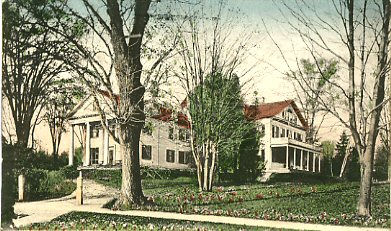
The Capen School did not survive the death of Miss Bessie Capen, its headmistress and owner — talk about a private school! Capen was one of a great many girls’ academies that have since vanished from the educational map. Early in the 20th century girls could not make the assumptions about education and careers that you do now. If a woman attended college at all, she might go to a state normal school, and prepare for a career as a schoolteacher. Most private colleges were male enclaves, but there were a number of fine women’s colleges, either associated with men’s schools, like Radcliffe or Barnard, or independent colleges: Wellesley, Smith, Vassar, Mount Holyoke — whose mission was to provide women an education equal in rigor to that offered to men at Yale and Amherst. An ambitious young woman might attend one of these colleges, although there was certainly no guarantee, or even encouragement, that she continue a professional life after college.
By the 1920’s, this was beginning to change. More than half a century of women’s rights activism was gradually having an effect. Women won the right to vote in 1920. The women’s colleges had been leaders in the women’s rights movement. Fiercely independent and determined to prove that they were the equal of their male counterparts, their entrance requirements were stringent. And the problem was that throughout much of the country, the girl’s curriculum in public high schools was long on typing and home economics, and short on intellectual challenge.
That’s where the girls’ academies came in. Girls would attend with the expectation of getting the kind of advanced education that would prepare them for women’s college entrance exams. Since the schools catered mostly to an upper-class clientele, there was a measure of social indoctrination as well — in etiquette, in activities expected of cultured young ladies. One doesn’t hear the expression “finishing school” much any more, but that was part of their mission. Some of these schools are still around, modernized, to be sure: Miss Hall’s, Miss Porter’s, Emma Willard — or have been merged into coeducational conglomerates: Rosemary Hall with Choate, Chaffee with Loomis. Many more are simply gone, unable to maintain their relevance or their bank balances in the mid- or late 20th century milieu.
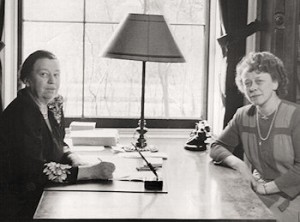
But Capen was unusual; part of its mission was to be a kind of P.G. school, for girls who had already completed high school, to prepare for Smith’s entrance exams. It filled a special need. When it closed in 1920, two of its faculty, Dorothy Bement and Sarah Whitaker, were urged to begin a new school. The idea seemed interesting, but, in Sarah’s words, “preposterous.” Dorothy Bement went off to teach French at Walnut Hill, and Sarah Whitaker to be assistant principal at The House in the Pines — another school that has vanished.
But after a year or so, they were still intrigued by the possibility of creating a school of their own. Founding a school isn’t something you just do. They needed buildings, faculty, equipment. Bottom line, they needed money, and they didn’t have any. As they would demonstrate time and again over the next 40 years, such an apparently major obstacle could be overcome – if one was determined enough. With the support of the Smith College president and Northampton business leaders, Whitaker and Bement were able to secure a bank loan of $15,000, with the condition that they raise the same amount. Their solution was right in line with the economic euphoria of the early twenties: they formed a corporation and issued stock. The Northampton Preparatory School, Incorporated was born! Happily, it was never known by that lead-footed title.
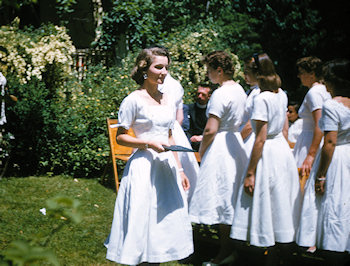
They had planned to buy an estate next to Smith College, and to use some of Smith’s facilities. At the last minute the deal fell through. But this turned out to be a good thing. Another property had become available, on Pomeroy Terrace, at the other end of Main Street, close enough to Smith for convenience but, as Sarah Whitaker noted in her memoirs, girls thought of colleges as glamorous places, and Capen had been much too close to Smith. They were able to purchase two large houses and a barn. The barn was converted to a gymnasium and classroom building, the houses to dorms, dining hall, and offices. There were meadows which would serve for athletics. Over the years they would purchase several other houses nearby. Until the Whitaker Bement building, now Northampton’s College Church, was built in 1962, the campus was indistinguishable from the rest of the neighborhood — except for large numbers of young women and the most spectacular gardens and landscaping in town.

Initially, their plan was to emphasize one-year intensive courses to prepare students for college entrance. This was more from economic necessity than anything else. After only a couple of years, most of their students would enroll in a full, multi-year high school course. But in 1924, they needed students, and wondered if anyone would actually come. They need not have worried. I will read from Sarah Whitaker’s memoirs: “Even before we formally opened we had a pupil, Margaret Parkin from Chicago. She needed French; Miss Bement was available. When she arrived we had little or no furniture, one maid, and no cook, but we had beds, and Montgomery House was liveable. I did the cooking, we ate at a card table, and the Northampton School for Girls was functioning. A few days later a second girl arrived. She needed English. We found a local tutor, a kitchen table and a cook.” Over the next few years enrollment grew, as Northampton School established a reputation for academic excellence in an environment that emphasized simplicity and community. No “finishing school” here!
The stock market crash of 1929 plunged the country and the world into the worst economic Depression in history. Northampton School for Girls had been open just five years. In modern terms, their plan to raise money by forming a corporation and selling stock was not unlike founding a country and printing their own money. Why, and how, Northampton School was able to stay open remains a mystery ascribable in large part to heroic stubbornness. It would not have occurred to Sarah and Dorothy to admit failure! There were years in which they drew no salary, but instead voted themselves additional shares of their now-worthless stock. That, my friends, is optimism! They managed to hang onto the land and buildings — a neat trick, considering that these were the school’s only real assets, and were heavily mortgaged. Students kept coming. There were occasions when Sarah Whitaker quietly told fathers down on their luck to “pay what you can.” How many students were actually able to pay tuition, no one will ever know. Most financial records have not survived.
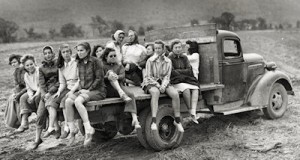
There were other disasters. The campus was on the flood plain of the Connecticut River. Now there is an impressive dike holding back the spring floods; there was nothing in 1926, or 1936, or 1938, when floods left much of the campus underwater. Imperturbable, they saved the furniture, shoveled out the mud, and continued, remembering to defiantly celebrate the anniversary of the worst flood with an annual school picnic on the riverbank. Furthermore, during the floods they managed to feed and house many of their neighbors who were worse off. This spirit of community obligation was something they imparted to their girls. During the Second World War, when so many men were in the service, there was a need for local farm workers. The school turned out every morning for a couple of hours of asparagus or potato harvesting before class. Dorothy Bement had close ties with a school in the French town of Montcel. Through her efforts ‘Hamp School girls were able to provide much support to Montcel during the hard years after the War. For her services, Dorothy Bement was awarded a medal by the French Government.
On the surface, one wouldn’t have thought the Principals compatible. Sarah Whitaker was a woman of great warmth and infinite patience, beloved by all her students. Dorothy Bement — well, if you were planning to get into trouble, it was best to be caught by Miss Whitaker. Miss Bement had a way of being firm that could leave you shaking for days. Oddly enough, there is evidence that this was a postwar reversal of the roles they had initially adopted. But Dorothy Bement always was a tremendous, and tremendously demanding, teacher who set a high standard for her colleagues as well as her students. There are suggestions that her famously short temper stemmed from disappointment when people didn’t live up to their potential.
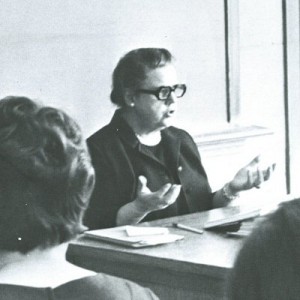
There were, throughout ‘Hamp’s history, some magnificent teachers, as demanding and quirky as Dorothy Bement. My own mother was one of them. Special mention must be made of Hélène Cantarella. A giant standing five-foot-nothing, she was a nationally prominent critic of both American and Italian literature and contemporary film. She and her husband had been active in the Italian resistance to Mussolini’s fascism. And she was probably the most intellectually demanding English teacher in the history of either school. Her senior English syllabus was massive – and none of it optional. The comments Professora Cantarella wrote on student papers were of such intensity that one alumna, who has otherwise been very generous to the archives, destroyed her Senior English collection rather than have those comments fall into the unsympathetic hands of Posterity. She was fierce, she was sometimes cruel: her classes were peppered with remarks like, “You girls have nothing in your top stories. I feel sorry for your husbands.” Or, “Would you like a rattle?”
And her students ate it up. Polly Eskanasy, class of 1965, has written that she “never felt so alive as in her classes.” And Mrs. Cantarella’s biographer, Ann Tracy, leaves this extraordinary image: “Old snapshots show her at her classroom desk, her hand raised and cupped as though it held the contents of their brains up to the scrutiny of God.”
Relations between Northampton School and Williston Academy began early. In the 1920s Williston Headmaster Galbraith and his wife held Sunday open houses at their home, at which a handful of ‘Hamp girls might converse with a select group of Williston boys, under the watchful eyes of both sets of principals. In 1935, someone had the idea of forming a weekly dancing class, attended by students only with written parental permission. Times have changed, haven’t they? By the end of the 1930’s Northampton and Williston choirs were performing together, there were annual joint productions of Gilbert and Sullivan operettas, and girls were coming to Easthampton to participate in Williston theater performances.
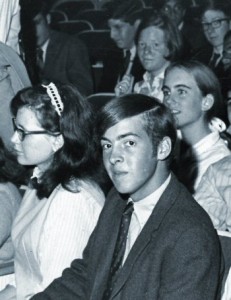
In the sixties, Northampton School and Williston began to cooperate in the classroom. Northampton girls came to Williston for Physics and German; Williston boys traveled to Pomeroy Terrace for certain advanced Mathematics classes. In 1968 the combined senior classes took our new Humanities Lecture Course for the first time. Although there was no formal relationship, it seemed to us students – yes, I was here – that we were, in some undefined way, brother and sister schools.
Whitaker and Bement retired in 1962. They would remain together until Sarah’s death in 1976. It was a friendship and working partnership that lasted 62 years. But a few years after they’d retired, the Northampton administration and trustees began to wonder how long their tiny school could keep its high standards and remain financially viable. Meanwhile, Williston Academy Headmaster Phillips Stevens and his board were quietly considering whether coeducation might lie in Williston’s future. One option was to combine operations with Northampton School. There followed several years of sometimes painful negotiation and posturing. In 1969 Stevens, to demonstrate his impatience with Northampton’s foot-dragging, made a great show of opening relations with the MacDuffie School. Northampton Head Nathan Fuller got the message.

By 1970, there was a sense of urgency. It was a tough time for private schools, one that would not improve much in the coming decade. A bad economy, increased student activism, and an evolution in the social outlook of the country, motivated in large part by Vietnam- and Watergate-related disillusionment, made it a challenge for private schools to justify their existence. Many weaker schools closed their doors outright. Northampton School clearly could no longer survive alone. The two Boards of Trustees became convinced that combining operations made economic, as well as educational and social sense. In October of 1970 the schools announced that Northampton would merge with Williston in the fall of 1971. The Northampton campus would be sold.
What was now called The Williston Northampton School did not represent a happy marriage at first. Negotiations had been conducted in such confidence that most students, and many faculty, were completely surprised. Northampton students felt betrayed. There was a justifiable concern that Big Bad Williston would swallow poor little ‘Hamp School whole.
And I have to say that certain elements at Williston did not show their best faces when news of the merger came. It was suggested — by some who were willfully ignorant of ‘Hamp’s academic tradition — that the girls wouldn’t be up to Williston standards. There was an old-boys-club atmosphere — it’s hard to find a word for it, although “Neanderthal” comes to mind — that appeared to be threatened. Those girls were going to ruin everything.
Of course, the opposite proved to be true. But two Boards of Trustees, two administrations, two faculties, had to be combined, with inevitable philosophical disagreements and territorial disputes, many of them serious. After a year of less-than-amicable joint rule, Phillips Stevens retired and Nathan Fuller moved on. Both were treated far more shabbily than they deserved, especially Phil Stevens, whose twenty-two good years surely balanced one bad one. But panic, stubbornness, and paranoia, when shared in approximately equal measure by faculty, administration, and trustees, could only end badly. The strong coeducational school that emerged from the 1970s came about because most of the principal actors, often calling upon wildly optimistic resources of creativity, compassion, humor, and wisdom, helped heal the divisions and recognize our strengths. And underlying the kindergarten-from-hell atmosphere was another reality: we were very nearly broke. Few realize how close we came to closing.
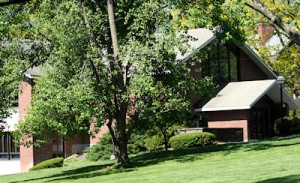
Operating a private school in the economic and social climate of the 1970s should have been sufficiently challenging. Williston Northampton was in deeper trouble. The Commonwealth of Massachusetts backed out of an agreement to purchase the Northampton campus as a single unit. For more than a year the school had to pay for the upkeep of the buildings, ultimately selling the individual properties to a consortium of investors, for much less than had been projected. The most attractive of the residence halls burned. And anticipating a quick infusion of cash from the sale, we’d gone ahead and built a new building here. The Whitaker-Bement Building was intended as a Girls’ Center, housing separate-but-equal social and study facilities. Its construction had been a key element in the negotiations to merge. But no one had thought to consult the students who, quite correctly, had absolutely no interest in segregation. The structure was a white elephant, mis-employed for a variety of purposes for several years, until it became home to our Middle School.
Naturally, students, being more resilient than their elders, found ways to make coeducation work almost immediately, perhaps with a few rough spots. As for the idea that the girls were somehow below par, the Cum Laude and Honors lists of ‘72 and ‘73 were disproportionately female, populated by those supposedly academically arrested young women who had come over in the merger.
And 40 years later, here we are. And doing well! There are still alumni from both ‘Hamp and Williston who haven’t quite forgiven us for changing. But all institutions, including schools, evolve, must evolve, with the times. And where, in all of this, is the essence of Northampton School? Let’s try something … this is just for the women in the audience …

If you are a proctor, or a class officer, or a member of the student council, or an officer in a club or service organization, or an editor of a school publication, or an Areté or writing center or math tutor, or peer educator, please stand and remain standing;
Or if you are on or have ever been on academic honors, or are captain of a team, or have earned a varsity letter, or won an academic award, please stand;
If you are new this year, and you did any of these things in your last school, please stand and keep standing; if you are a girl and you aspire to be among those standing, please stand.
Now, gentlemen, I invite you to stand in solidarity with your sisters.
You are the living legacy of Northampton School for Girls, of Sarah Whitaker and Dorothy Bement and Hélène Cantarella and hundreds of alumnae who came before you. They are YOUR history, and you are PART of that history, and you ARE that history.
Everyone, go make history yourselves. Thank you.
Your comments and questions are encouraged! Please use the space below.


Stunning, beautifully engaging for any hour, thoroughly informative
and deeply emotional for me to feel my part of the history and to be one person who benefitted and helped to create what is Williston Northampton today. My fondest memories are of the music, theatre and social connections we already shared, and the folks with whom I am still in touch. Thank you, margee ’63
Well done, Rick Teller! The presentation needs wider distribution to all Hamp alumnae. They (Hamp alumnae) must surely realize that ultimately there were considerable pluses to the merger. Alas, I am one, however, who still believes there is a place in our culture and society for single-sex institutions…to allow one to grow up in his/her own shoes (gender, as well) during adolescence. My two cents!
Geraldina Baca
(63)
It was until tonight that I learned of the merger with Williston Academy. For years, I had tried to contact my classmates from NSFG through classmates.com to no avail. It has been very disappointing and frustrating. I was very glad to read a short message from Margee Moffet above. Great!!!
Hey, Geraldina! Thanks for your response. We were part of the amazing and courageous career that misses Whitaker and Bement walked, and we helped to walk the school toward its new chapter with Williston. We were blessed.
Hope you are well, and I would be happy to be in touch with you.
Thank you so much for the history. Sarah was my great aunt. I have very fond memories of visiting the school during summer vacations with my parents and siblings. The 19 acres on which the school sat was just so much fun for a boy my age. We could run forever, explore, play in the gym, snap beans on the porch and sit at that long table for dinner. I also remember years later attending a graduation at which Aunt Sarah gave a 20 minute coherent and meaningful address to the class without notes. She was 92 years old at the time. A remarkable woman.
I knew little of the school history, even while attending NSFG. The Misses Whitaker and Bement were truly remarkable ladies. I am in the process of writing my autobiography for my grandchildren, and digging through memories of my childhood. Attending NSFG was a life-changing event for me. The small size allowed me to develop deep friendships unlike any I had previously experienced. It was impossible to “hide in a corner”, so I developed self-confidence. I was fully prepared to hold my own at Carnegie Tech (now Carnegie Mellon University). My 65 years since leaving NSFG have been full and of service to my community and I owe it all to the lessons (in the classroom and out) learned at NSFG. Thank you Miss Whitaker and Miss Bement and all my classmates from 1954.
I was so happy to come upon this archive, having many happy memories of my two years at NSFG. It seems like yesterday: Mrs. Cantarella’s English class and her required summer reading of the “classics”, bike riding around Northampton, the concert series, horseback riding/jumping, my music group The Hampsters and it goes on: so many opportunities! Great friendships of course. Hello to all from the graduating class of ’64!